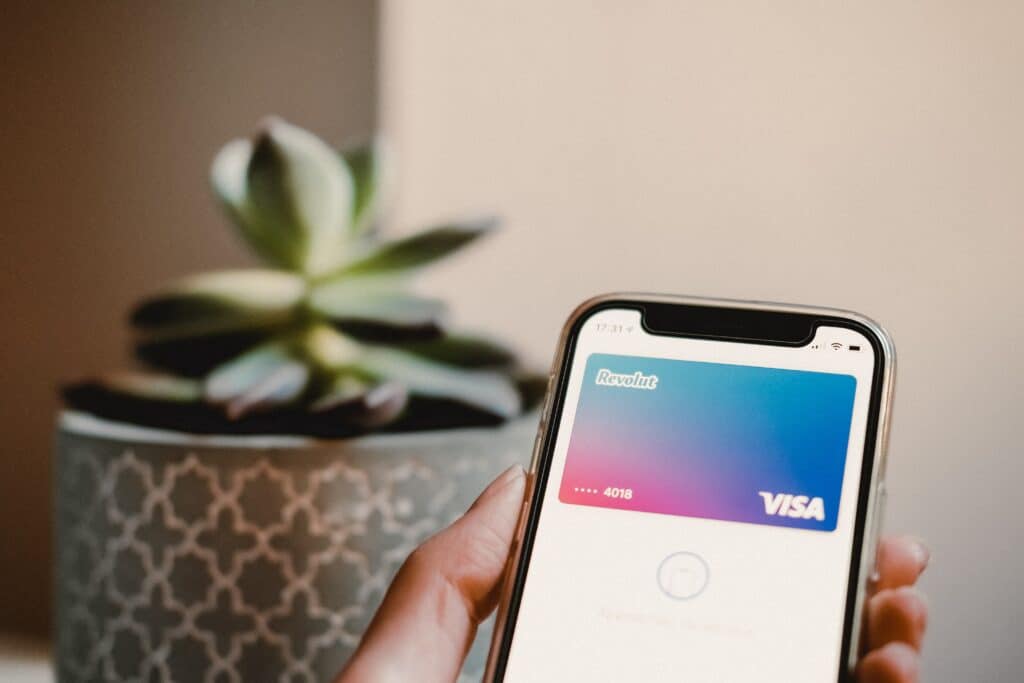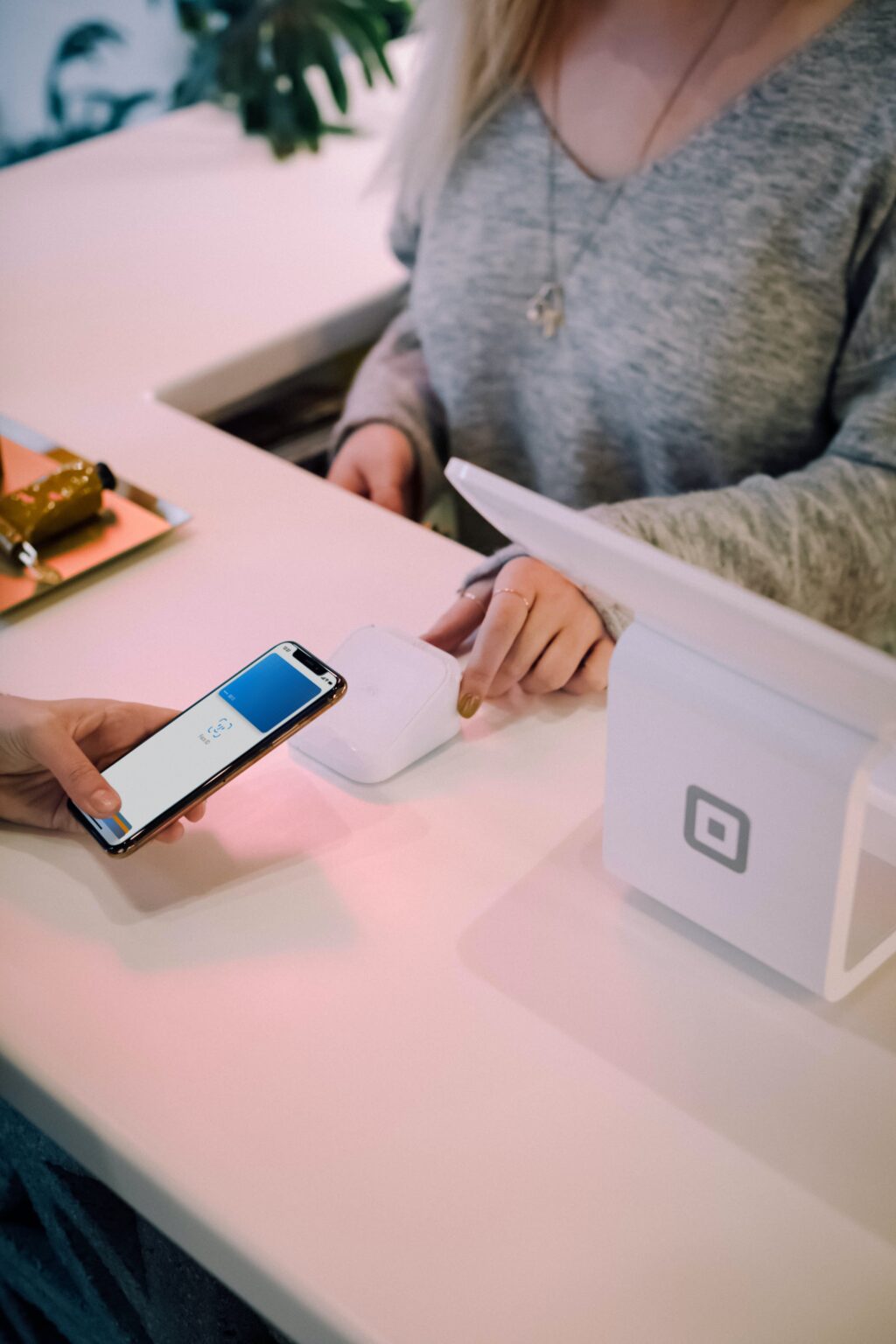The world of money is going through a huge change thanks to mobile payment platforms like Apple Pay, Google Wallet, and PayPal. They’re not just altering how we buy stuff but also shaking up the usual ways banks work.
This article dives into the hurdles and chances these cool new ideas bring to regular banks and how they’re keeping up with this super-fast digital makeover.
IMAGE: UNSPLASH
The Rise Of Mobile Payment Platforms
In today’s changing financial world, the emergence of mobile payment platforms stands out as a big change, shaking up how we usually see banking. These platforms, known for being easy to use, available to almost everyone, and super quick with transactions, have completely changed how people handle their money.
The changes happening in traditional banking are huge. Banks have to really step up their game, finding new ways to keep up by adding more digital services. It’s all because people want quick, safe, and smooth transactions, which mobile platforms are really good at delivering.
As mobile payment systems get smarter, adding stuff like sending money to friends, paying without touching anything, and even helping you manage your money better, they’re not just another way to bank. They’re actually becoming the go-to option for more and more people.
This trend hints at a future where mobile platforms might outshine traditional banking. That means banks will need to rethink how they fit into a digital financial world and what services they offer.
Impact On Traditional Banks
The rise of mobile payments is throwing a big curveball at traditional banks. They’re facing a major problem: fewer people coming into their actual branches because everyone’s going digital. Plus, these platforms usually charge lower fees, which makes them way more appealing to both regular people and businesses.
Adapting To Digital Demands
The rise in mobile payment systems is really shaking up how traditional banks do business. Because of this tech boom, regular banks are facing a big challenge—people just aren’t coming into their brick-and-mortar branches as much.
It’s all because people and businesses are leaning more toward the ease of digital transactions.
Plus, these mobile payment platforms also come with the perk of having lower transaction fees compared to the old-school options. This cost-saving feature makes them even more appealing to a wide range of users, from regular folks to big businesses.
As a result, regular banks have to take a hard look at how they do things and change up their game plans to stay in the race and stay important in this ever-changing financial world.
The Betting Industry Example
One cool thing about digital payment solutions is how they’re used in the betting world. For instance, users can now use Trustly for betting, which offers a secure and direct bank-to-bank payment method.
This connection demonstrates how digital payment solutions can fit into different industries, making transactions smooth and super secure.
The Security Challenge
Traditional banks have a big edge when it comes to how people see them as super secure. People think of these time-honored money places as really solid and safe, especially with keeping important money stuff safe.
But when it comes to tech companies handling money, folks tend to be way more careful and not as trusting.
Understanding the importance of trust, banks are taking active steps to use it in boosting their digital security. With online transactions and mobile banking gaining more traction, these banks are dedicated to making sure their digital systems have strong security measures.
They aim not just to meet but even surpass the security levels of their regular physical branches in their online and mobile banking services.
Banks know how crucial it is to keep financial transactions and customer info safe and sound. That’s why they’re pouring a lot of resources into top-notch cybersecurity technologies and methods.
They’re using fancy encryption techniques, constantly keeping an eye on transactions to catch any fishy business, and adding extra layers of security with things like multi-factor authentication.
Banks are putting effort into teaching their customers about staying safe while banking online. They’re giving tips on spotting phishing scams, securing your gadgets, and knowing which websites are safe.
Their goal is to make sure customers are well-informed and alert, which ultimately protects their money and personal info in the online world.
Opportunities For Collaboration
The rise in mobile payment tech is opening doors for exciting partnerships, especially between old-school banks and new-gen fintech companies. This growing field is ripe for teamwork, where banks can tap into the latest tech and easy-to-use interfaces crafted by fintech players.
At the same time, fintech firms could score big by accessing banks’ huge customer bases and their solid know-how on regulations.
This back-and-forth relationship holds the potential to nurture new financial ideas tailored exactly to what people today want and need.
Working together like this could completely change how we handle money, crafting new things that mix the strength of old-school banking with the fresh ideas and quick moves of fintech.
This give-and-take is a big leap toward building a financial world that works well and stays in tune with what today’s world asks for.
Conclusion
Mobile payment platforms have really changed the game for traditional banking. They’ve brought in a whole new way of handling money stuff. These platforms are all about making financial services easier to get to for everyone, especially those who might not have had easy access before.
That’s because they’re so handy and efficient. Now, regular banks are feeling the pressure to get creative and add more digital services to keep up.
This shift has led to a cool teamwork vibe where banks and fintech companies team up to give us even more options. But it’s not all smooth sailing. Safety worries and following all the rules are still big concerns.
Things are changing fast, but one thing’s for sure: the teamwork between mobile payments and regular banking is going to keep on changing how we do money stuff. And that’s good news for all of us using money, whether we’re regular people or running a business.
Disclaimer: The above references an opinion of the author and is for information purposes only. Never gamble for more than you can afford to lose. Gambling can lead to a serious addiction. Gamble responsibly.
IMAGE: UNSPLASH
If you are interested in even more business-related articles and information from us here at Bit Rebels, then we have a lot to choose from.


COMMENTS